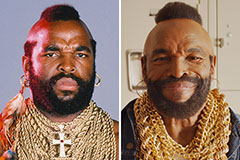What Do I Need To Think About When Purchasing An Cpa Email Database? It is important to consider these factors before purchasing an email list of CPAs (Certified Public Accountants):1. The list should be compliant with all legal requirements, and be relevant to your marketing goals. Here's what to look for:1. Quality of data and accuracySource of i
30 Excellent Suggestions For Picking Oxplay Sites
Top 10 Suggestions For Oxplay Indonesian Online Gambling Platforms On Licensing And Regulation Understanding Indonesia's regulation and licensing framework will allow you to make sure that your betting site is safe and legal. Here are the 10 most important tips to ensure that Devil666 Slot Indonesian online betting sites are in compliance with Oxpl
30 Handy Pieces Of Advice For Choosing 7 Raja Togel Websites
The 10 Best Tips For Payment Options On 7raja Togel Indonesian Online Betting Platforms When you are evaluating 7raja Togel Indonesian betting sites online, payment options are a critical factor. The payment options you choose can impact the overall experience of gambling. Here are the top 10 guidelines to evaluate payment options for 7rajatogel In
30 Great Facts For Choosing ASIAN 2 BET Websites
Ten Tips For A Better User Experience ASIAN2BET Login Indonesian Betting Platforms The user experience (UX) is a vital aspect of any online betting platform. The user experience (UX) is a crucial aspect of any betting site online. It covers everything from the design of the website to customer service and can determine how enjoyable and efficient y
30 Great Tips For Choosing Tajir4D RTP Websites
Ten Tips To Enhance Customer Experience On tajir4d rtp Indonesian Betting Platforms The experience for the user (UX) that is the most important element of any betting site is vital. This includes everything from website design to customer services and influences how pleasurable and efficient betting can be. These are the 10 best strategies for taji
 Mr. T Then & Now!
Mr. T Then & Now! Shaun Weiss Then & Now!
Shaun Weiss Then & Now! Alfonso Ribeiro Then & Now!
Alfonso Ribeiro Then & Now! Anthony Michael Hall Then & Now!
Anthony Michael Hall Then & Now! David Faustino Then & Now!
David Faustino Then & Now!